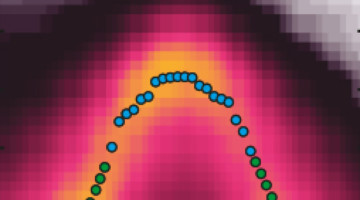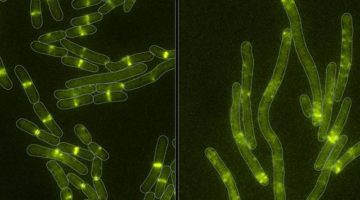Reflecting on my first year as ALS director, I am amazed and proud of several major organizational changes, significant accomplishments, and staff recognitions, though of course there are still many challenges left for the future. Read more »
All News & Updates
ALS Hosts 6th International Diffraction-Limited Storage Ring Workshop
Approximately 160 scientists from synchrotron facilities all over the world gathered at Berkeley Lab last fall for the 6th International Diffraction-Limited Storage Ring Workshop. Event participants discussed both the technical challenges and new research opportunities at next-generation x-ray facilities enabled by multibend achromat lattices. Read more »
March 6 Deadline for General User Proposals
The User Office is accepting new General User Proposals (GUPs) from scientists who wish to conduct research at the ALS in the 2019-2 (July–December) cycle. The deadline for submissions is March 6, 2019. Applicants are reminded that they may request joint access to the Molecular Foundry, a nanoscience user facility at Berkeley Lab, to support their ALS activities. Read more »
Electric-Field Switching of Topological Phase
Researchers have successfully switched a topological insulator on and off by applying an electrical field. The work represents a major advancement toward the creation of a functioning topological transistor that would allow devices to operate more efficiently at lower power than conventional electronics. Read more »![]()
![]()
A Two-Pronged Defense against Bacterial Self-Intoxication
Researchers solved the structure of a bacterial toxin bound to a neutralizing protein, revealing two distinct mechanisms for how the toxin-producing bacteria avoid poisoning themselves. The findings offer clues to the evolutionary origins of the potent toxins that enable bacterial pathogens to cause human diseases such as cholera and diphtheria. Read more »![]()
![]()
Comparative morphology of cheliceral muscles using high‐resolution X‐ray microcomputed‐tomography in palpimanoid spiders
Spiders are important predators in terrestrial ecosystems, yet we know very little about their principal feeding structures—the chelicerae—an extremely important aspect of spider biology. Here, using micro‐Computed‐Tomography scanning techniques, researchers perform a comparative study to examine cheliceral muscle morphology in six different spider specimens. Read more »
Pressure-driven band gap engineering in ion-conducting semiconductor silver orthophosphate
This work explores a novel method to tune the electronic band structures of active semiconductor photocatalysts to gain insight into structure–property relationships. Taking silver orthophosphate (Ag3PO4) as an example, a static pressure technique was applied to modulate the band gap and indirect–direct band character via altering its crystal structure and lattice parameters. Read more »
Revealing Hidden Spin: Unlocking New Paths Toward High-Temperature Superconductors
Researchers used spin- and angle-resolved photoemission spectroscopy (SARPES) to uncover a distinct pattern of electron spins within high-temperature cuprate superconductors. The discovery provides new insight into materials with potential for super-efficient power transmission without any loss of electron momentum. Read more »
Topological Matters: Toward a New Kind of Transistor
An experiment has demonstrated, for the first time, electronic switching in an exotic, ultrathin material that can carry a charge with nearly zero loss at room temperature. The ease in switching the material from an electrically conducting state to an insulating, or non-conducting state, bodes well for its future transistor applications. Read more »
Spatial and Temporal Correlations of XY Macro Spins
Artificial spin-ice structures have become prototypical systems to study vector spin frustration at the microscale and have recently been expanded towards XY spin systems and fundamentally fascinating phase transitions. The illustration depicts the quasi long-range ordered vortex phase in a nano disk honeycomb lattice imaged by magnetization-sensitive photoemission electron microscopy. Read more »
- « Previous Page
- 1
- …
- 87
- 88
- 89
- 90
- 91
- …
- 140
- Next Page »









